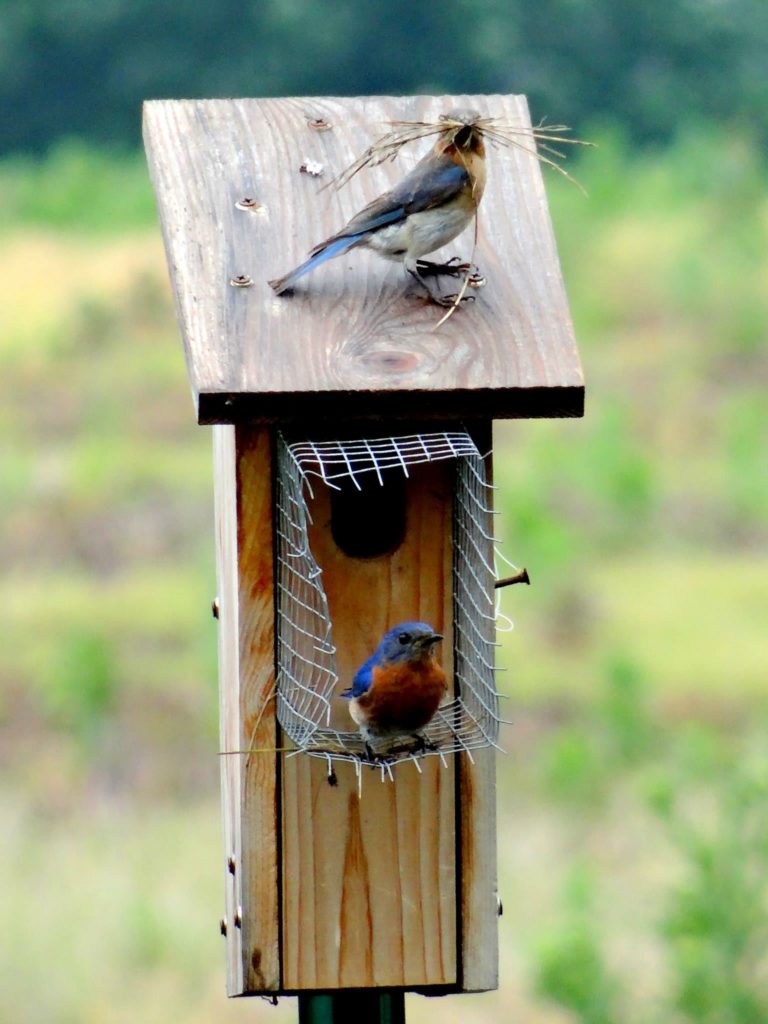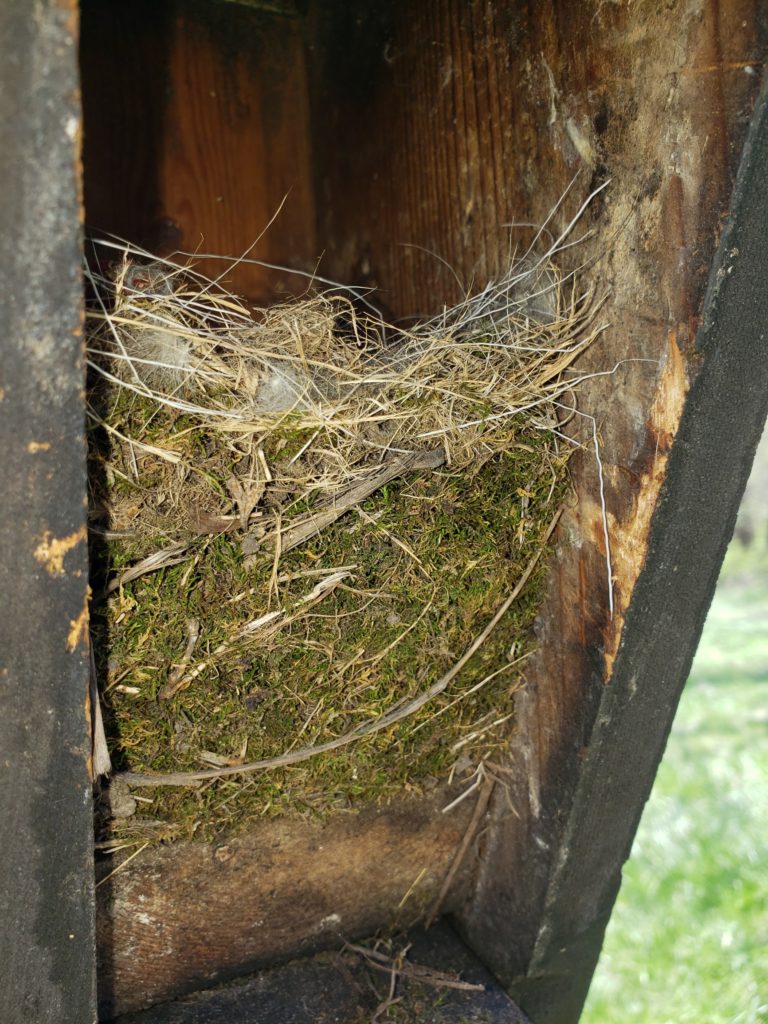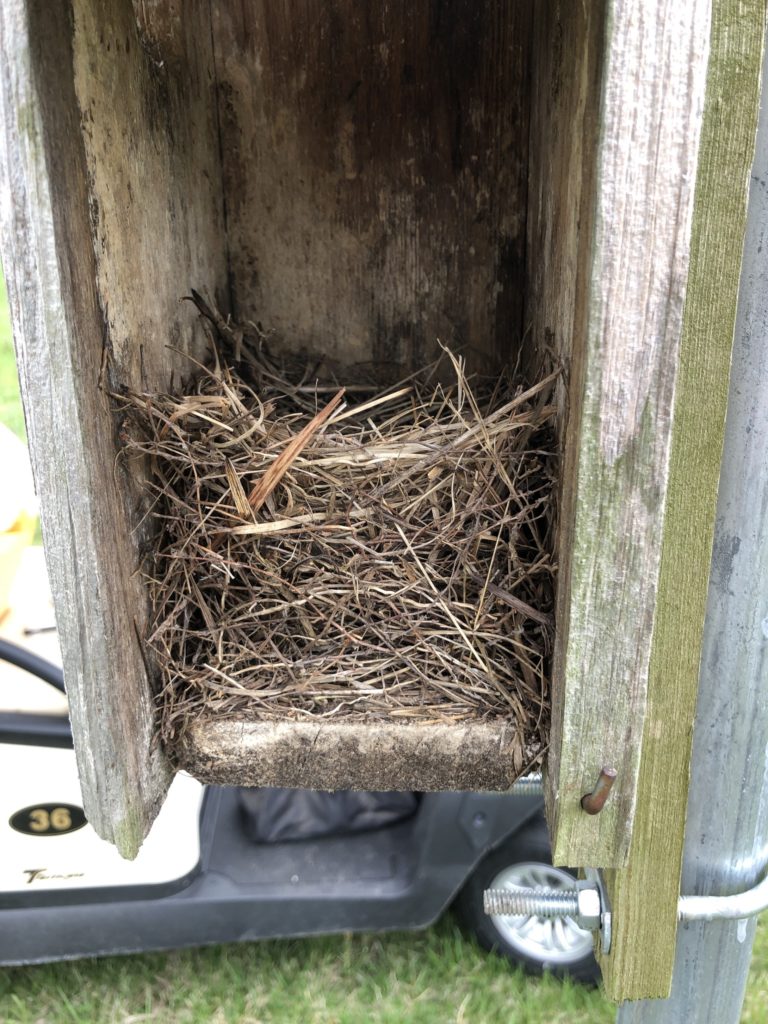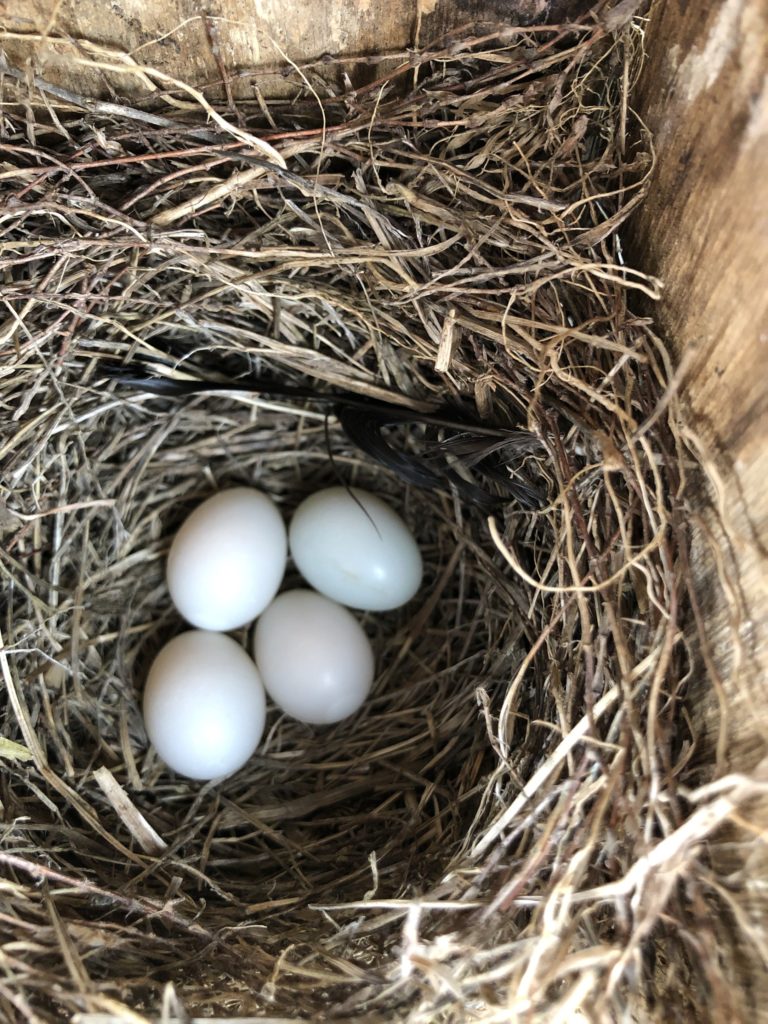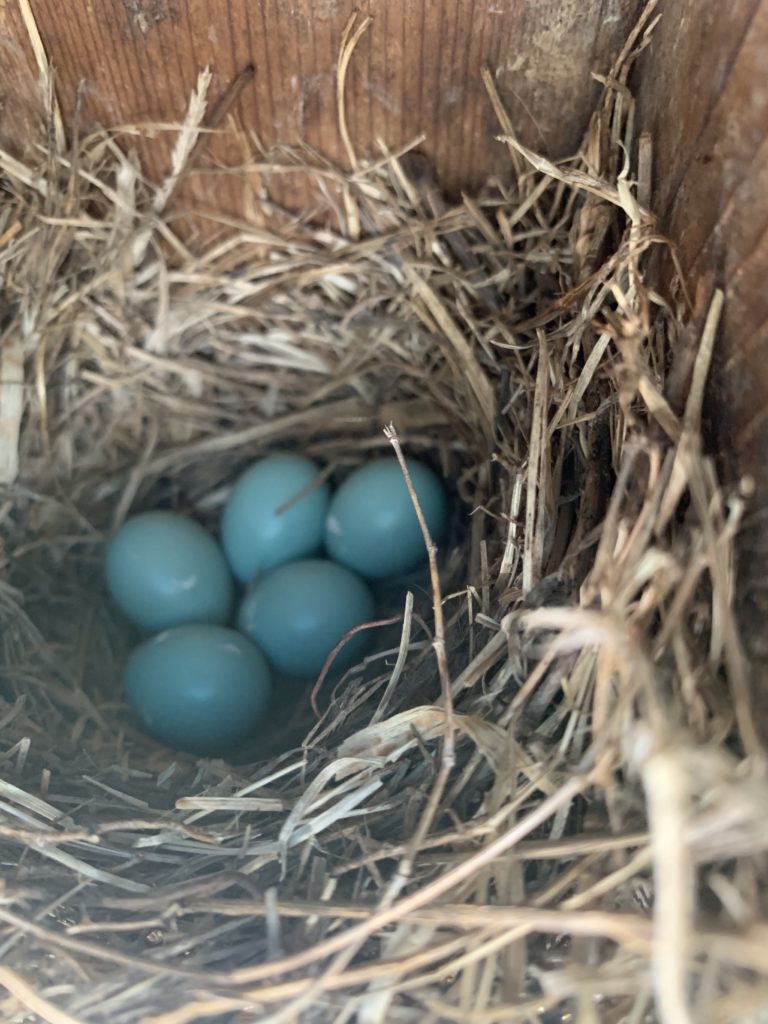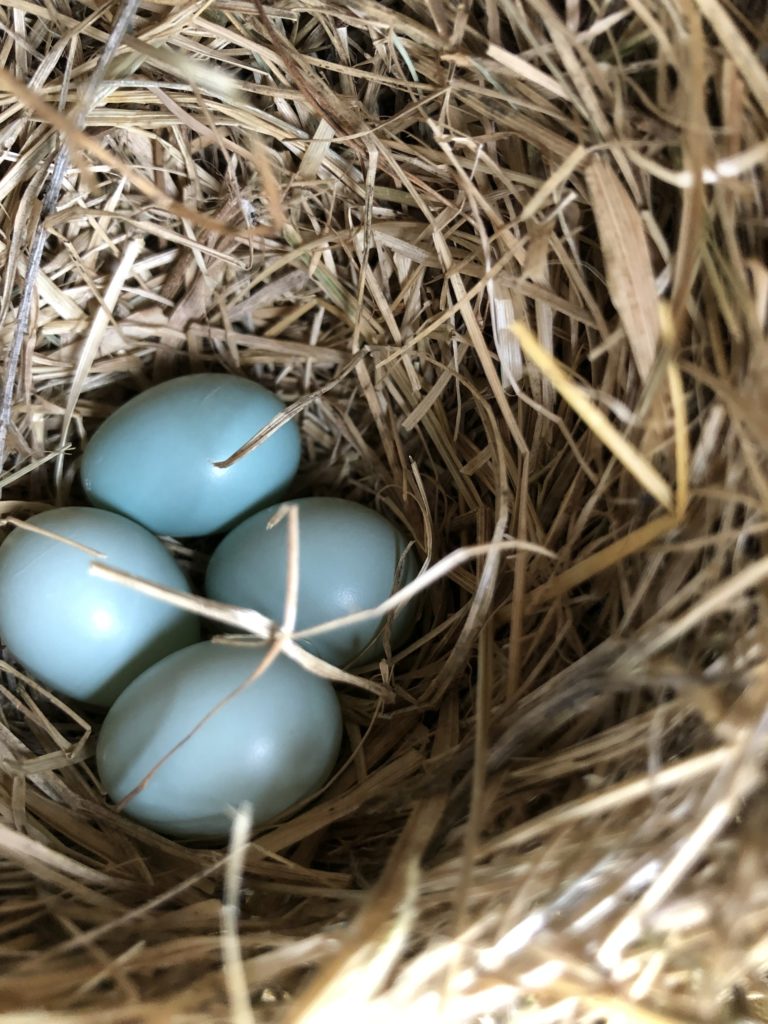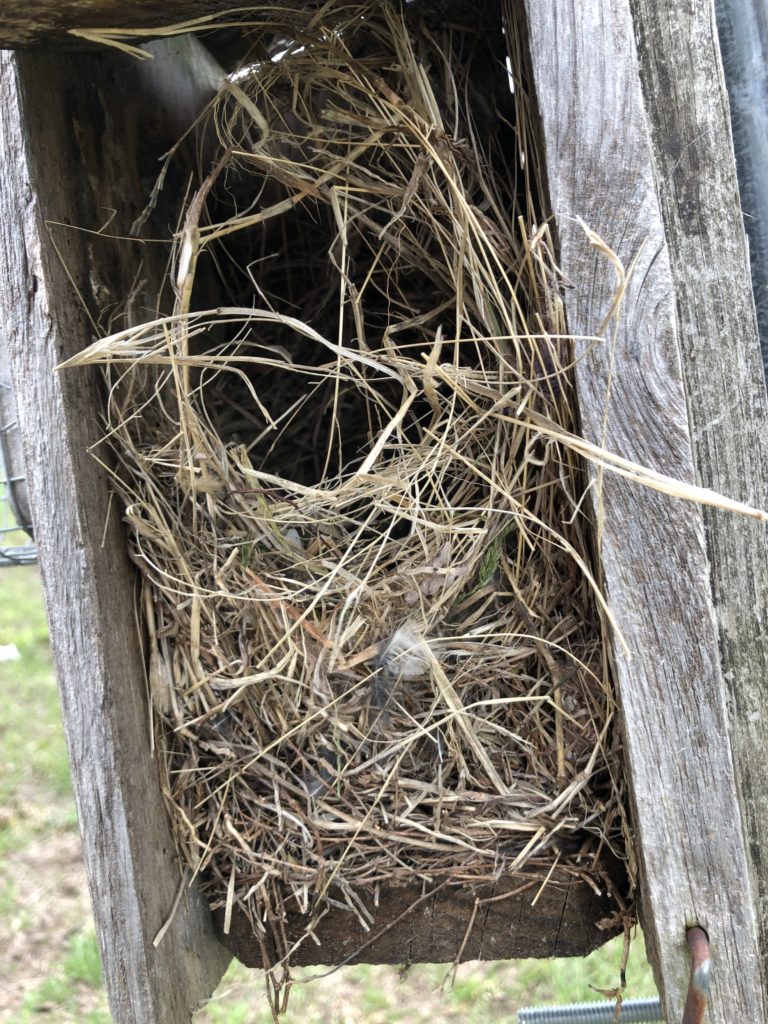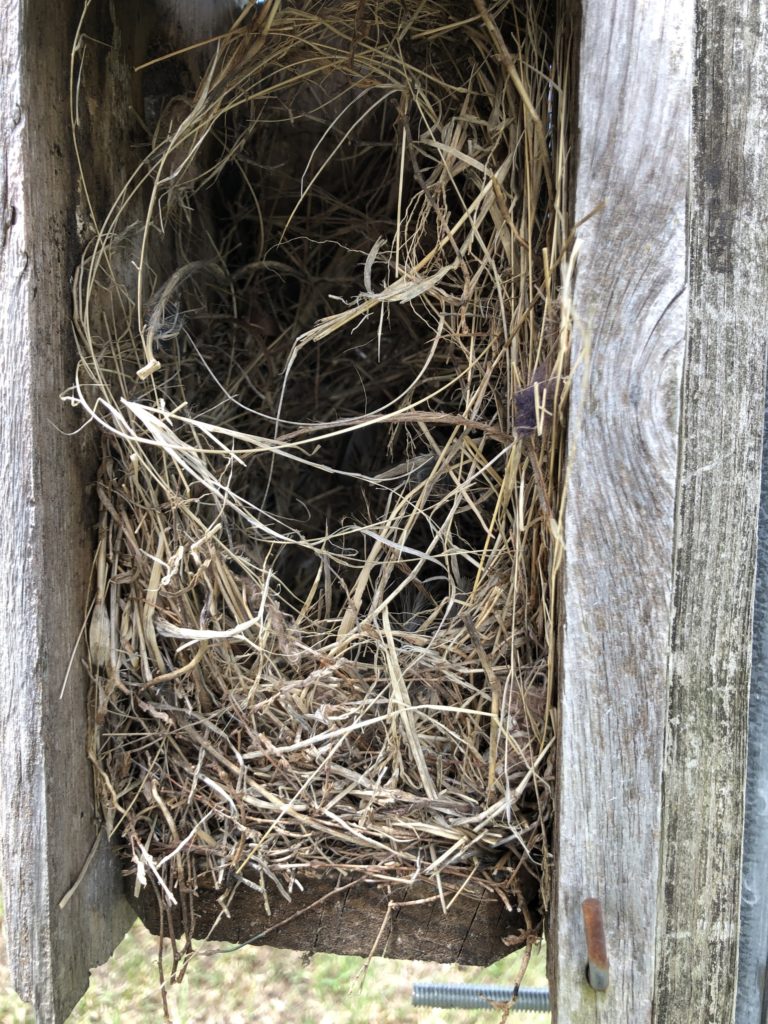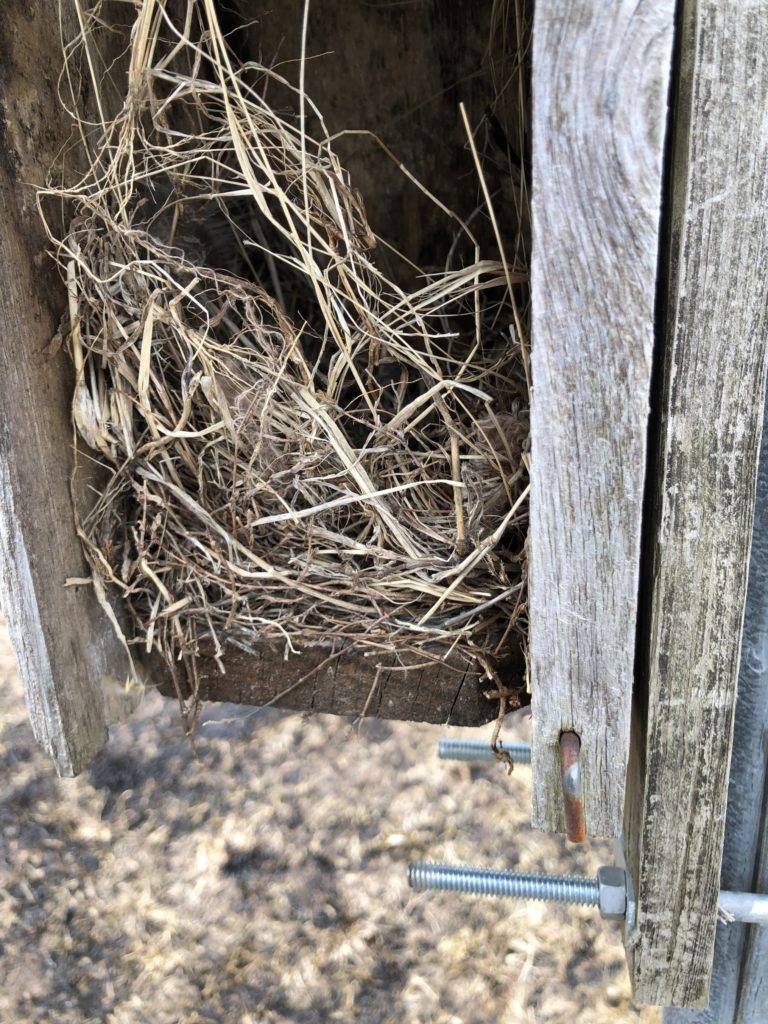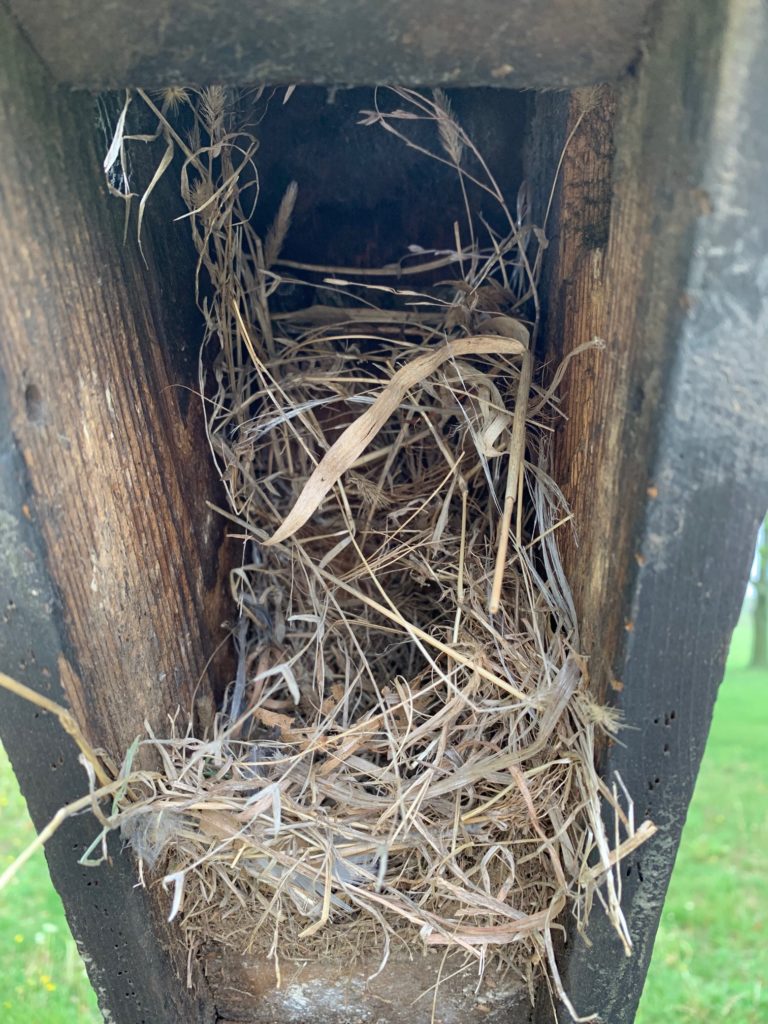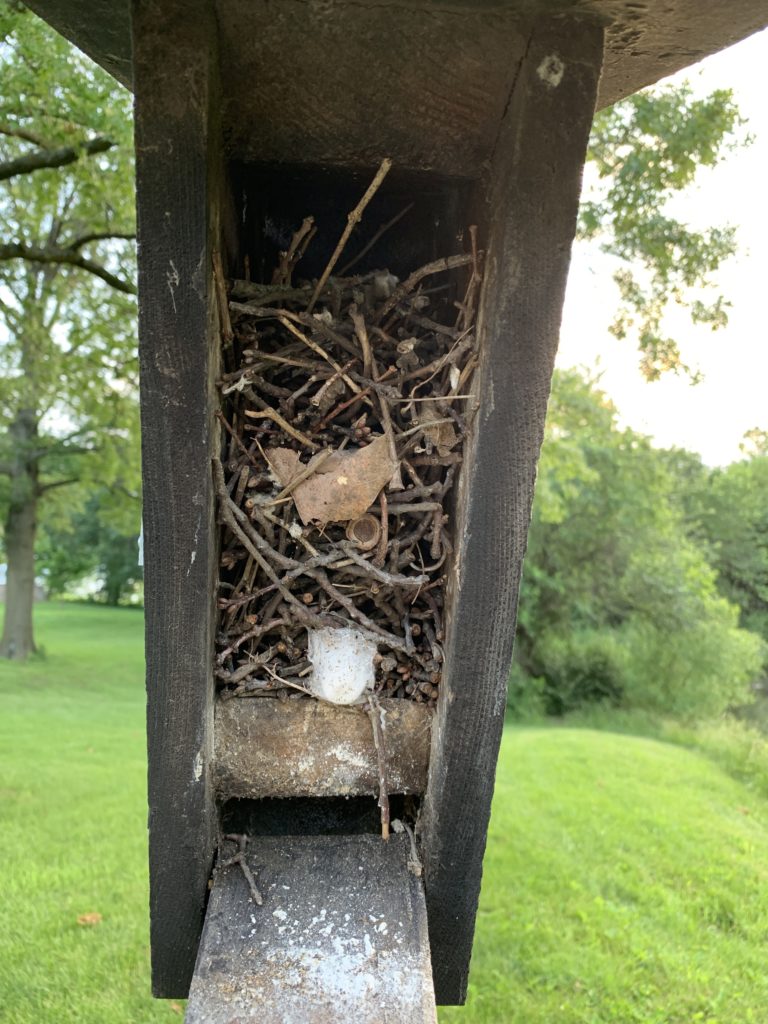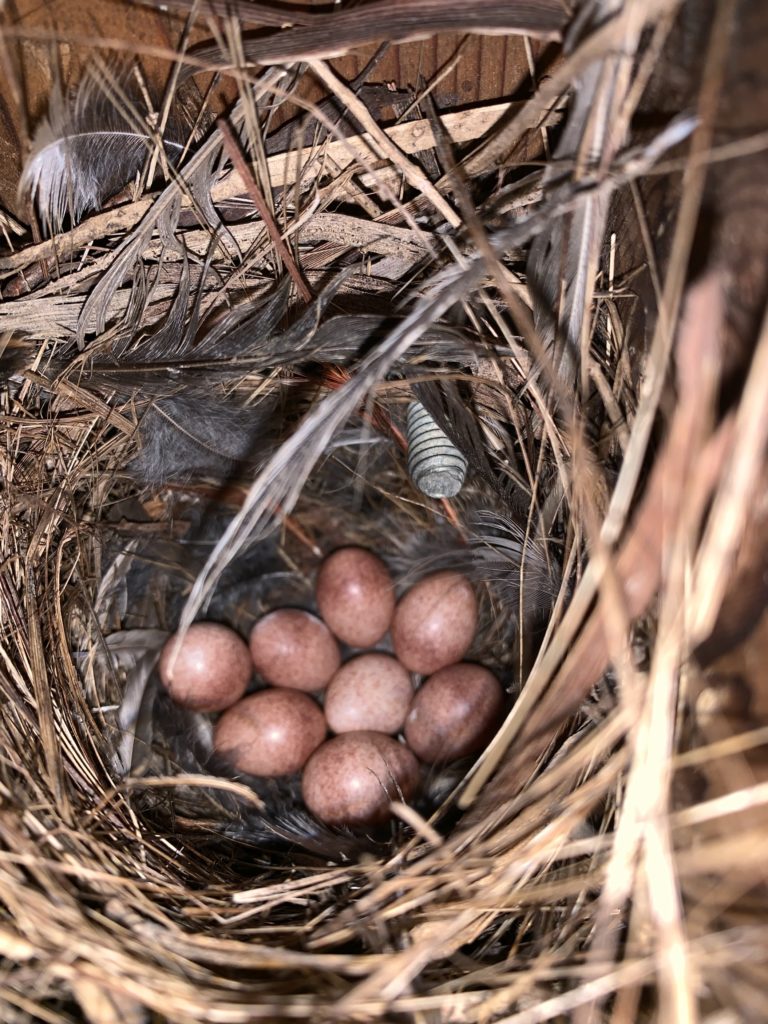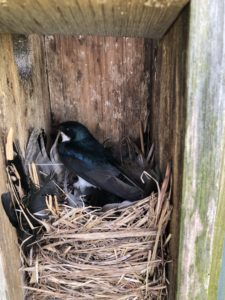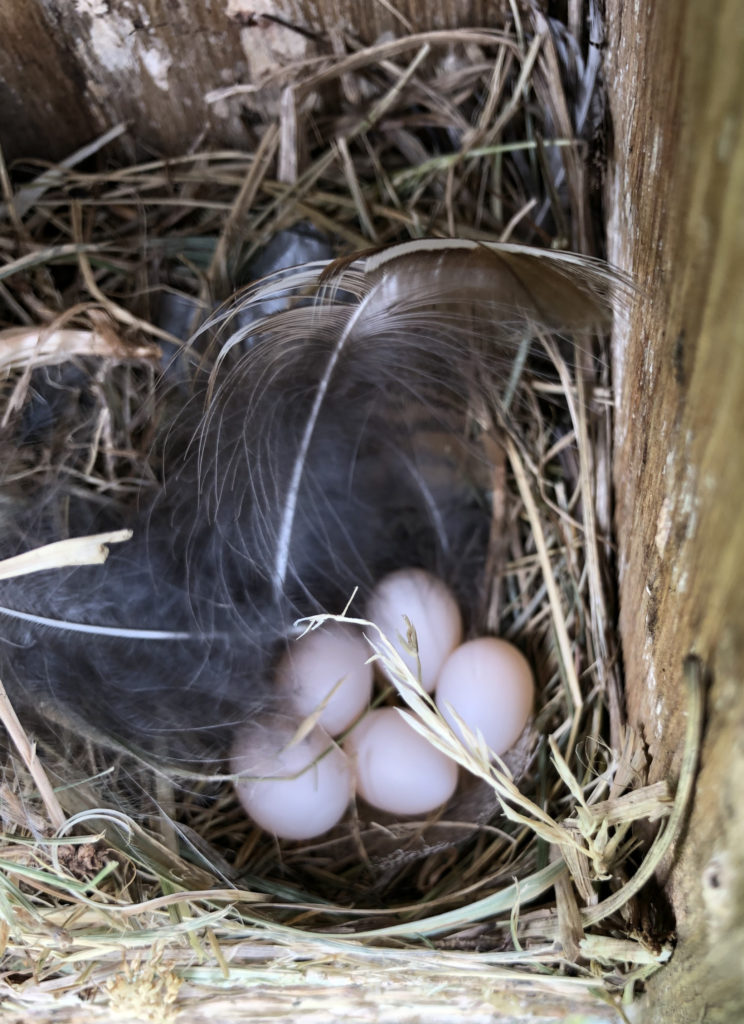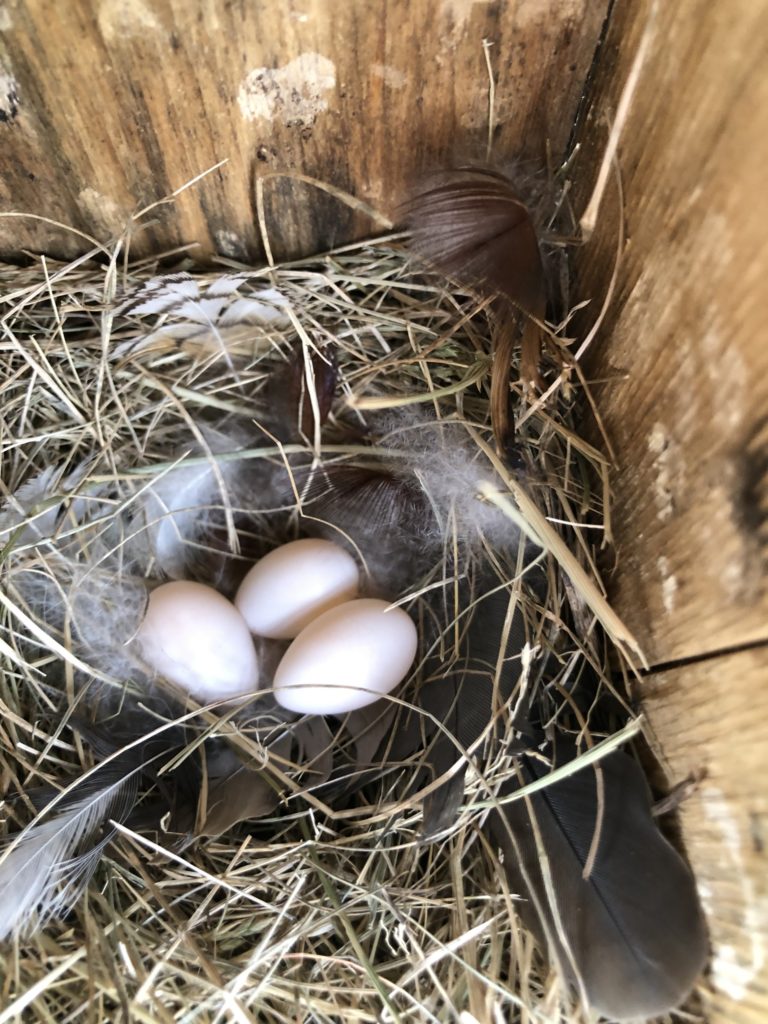Overview
BluebirdStewards.online isn’t just about bluebirds. All native birds have had a difficult time over the years and they could all use your help. The Migratory Bird Treaty Act of 1918 makes it unlawful to pursue, hunt, take, capture, kill, or sell migratory birds listed in the act and there are over 800 species on the list. With the exception of House Sparrows and Common Starlings, just about any bird nesting in your box is and should be respected and protected.
The primary purpose of BluebirdStewards.online is to capture data for citizen science and research purposes. This page provides some basic information to get started with monitoring bluebird houses and provides links to reliable information sources.
There are many other sites that devote many pages on birding. Sites that are based on research and/or tied to universities will generally provide reliable, fact-based information. NestWatch.org from Cornell University, a part of the Cooperative Extension System, is one such site. Data from this site are up-loaded to NestWatch to support their research efforts. There are many other local cooperative extension offices that also offer research, fact-based information. While not associated with a cooperative extension, North American Bluebird Society (NABS) is also a trusted source of information. Getting involved with and volunteering for a local ornithological, environmental or cooperative extension organization will give you an opportunity to learn more and help support your local community.
Nest Box Monitoring
Nest box monitoring can be scary but is necessary. Removing nests from invasive species and nests after fledglings have left gives native birds more opportunity. NestWatch provides a very extensive manual for monitoring. It is helpful to learn from an experienced monitor but below are some important tips, many from the NestWatch manual.
- Monitor frequently, every 3 to 7 days if possible. More frequent monitoring provides more accurate data and more opportunity to clean out boxes for the next native bird nest.
- Remove non-native, invasive species. Before removing any nest, make sure you are removing a non-native species that is not protected. In the U.S. this includes Common Starlings and House Sparrows. All others are most likely covered by the Migratory Bird Treaty Act.
- It is best to monitor in the afternoon. Most adult birds will leave the nest and you don’t want the nestlings to catch cold in the morning.
- Minimize any nest disturbance and don’t handle eggs or hatchlings. One exception would be to return an egg or hatchling to the nest.
- Do not approach nests when young are close to fledging as they may fledge pre-maturely. This is another reason to monitor frequently. You will know approximately how old the fledglings are. When you approach a nest box with older hatchlings, listen for the hatchlings. If they are still there it may be best to leave them alone. If you do open a box and a hatchling should jump out, carefully return it to the nest. NestWatch suggests you put smaller nestlings on top and once all are returned cover with a hand or tissue to calm them. Try to keep out of site when you carefully remove the covering. If they jump out again, it is probably best to let the parents handle it. They know what to do.
- Clean nest box once the nest is empty or no longer viable.
Nestbox cleaning
While most active nests are protected by the Migratory Bird Treaty Act, abandoned nests may be removed as well as those of non-native, invasive species such as the House Sparrow. It is best to clean a nest box once all the hatchlings have fledged and/or any remaining eggs/fledglings are no longer viable. Most eggs hatch within a couple weeks of being laid. NestWatch suggests waiting one month after the eggs are expected to hatch before declaring the eggs no longer viable. When cleaning a nest box:
- Wear gloves.
- Remove nest and place in container to remove it from the site. This is especially important when removing non-native, invasive species nests so they don’t just re-use the material.
- Scrape the bottom and sides of the box to remove all material.
There are a number of other steps that some stewards use. Others believe less is best.
Petroleum jelly to discourage wasps from inhabiting a nestbox.
In a post on preventing wasps from nesting in a bird nest box, Julie Craves, supervisor of avian research at the Rouge River Bird Observatory at the University of Michigan Dearborn points out that petroleum jelly can harm feathers and suggests using a bar of unscented soap. Other posts by Julie Craves suggests that while a bluebird is likely to avoid a box with wasps in it, it is unlikely the wasp will harm the bird.
Diatomaceous earth on bottom to discourage insects.
Diatomaceous earth is frequently placed at the bottom of the nest box after it is cleaned to reduce the likelihood of harmful insects such as mites from taking up residence. NestWatch.org, however, discourages this practice.
While we understand it can be distressing to find mites in your nest box, keep in mind that birds have evolved with the mites and have developed their own defenses to help guard against infestations. Never add chemicals like insecticides or diatomaceous earth into nests, even if the nests are not currently active, as even small residues could harm the delicate nestlings. Furthermore, we don’t know how eliminating such parasites can affect the immune strength of nestlings, which may need to rely on the immune responses they developed while in the nest box.
The Life and Times of Mites
Species Identification
The following species have been observed in nest boxes tracked on BluebirdStewards.online. Where available, multiple photo’s of nests and eggs are included to aid in identification. If a species is found that is not identified or a variant nest or egg is discovered please upload a photo in the observation section and notify admin@bluebirdstewards.online. We could also use photos taken by stewards of mature birds.
Black-capped Chickadee (Poecile atricapillus)
The black-capped chickadee’s nest is built from a base of coarse material that includes moss and/or bark strips with a lining of softer material such as mammal hair.
The chickadee’s clutch size is usually 6 to 8 eggs. The eggs are white with reddish brown dots mostly at the larger end. They are approximately .60″ long and .48″ wide.
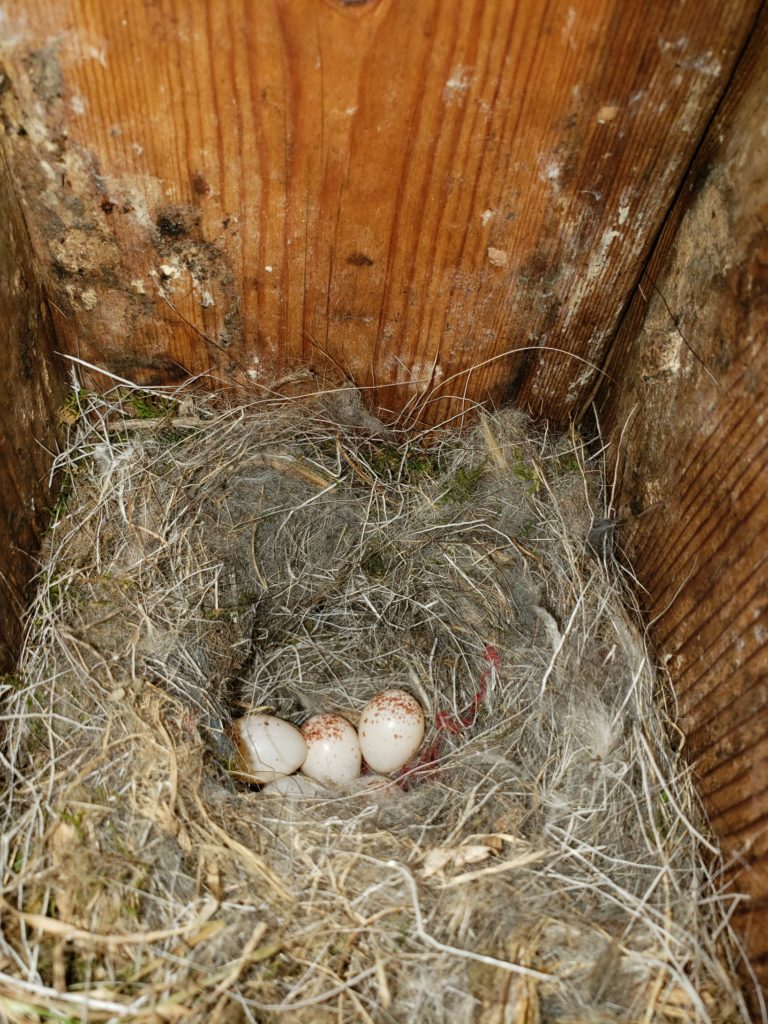
Carolina Wren (Thryothorus ludovicianus)
A Carolina wren’s nest is typically domed, coarsely made from a variety of material and lined.
A Carolina wren’s eggs are white, cream, or pinkish white, about 3/4 inch long and a little over a 1/2 inch in diameter with fine, rust colored spots. There are typically 3 to 7 eggs in a clutch.
Eastern Bluebird (Sialia sialis)
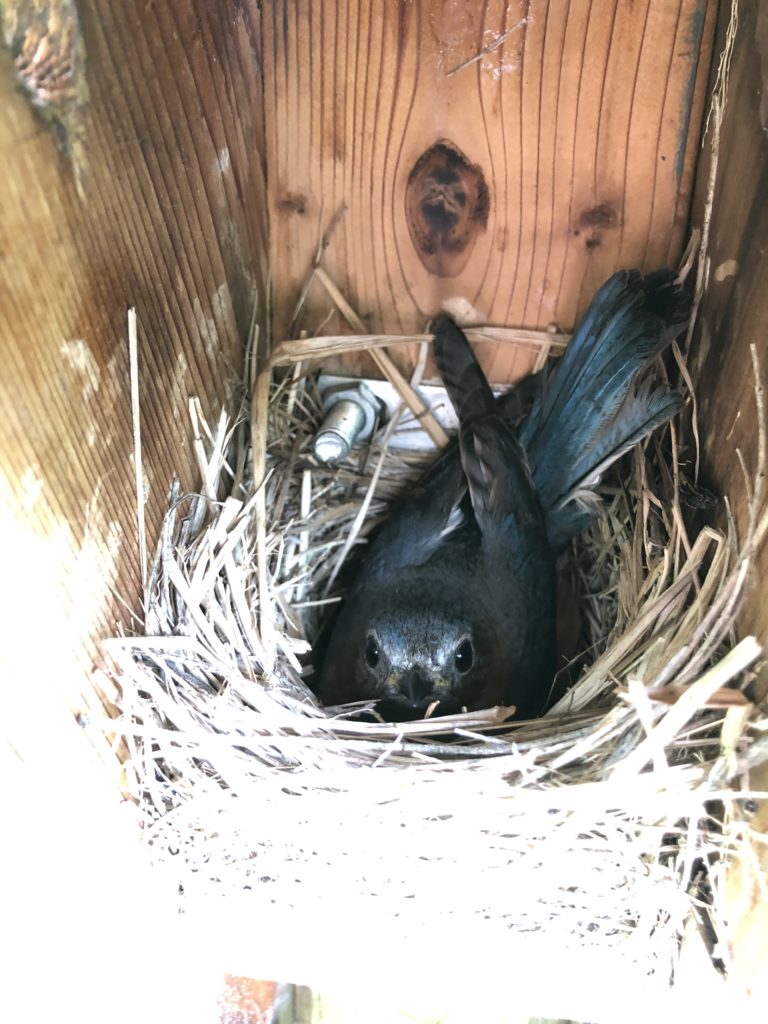

A bluebird nest is typically a neat, cup shaped, nest woven from fine grass or pine needles. It may have bits of fur, hair or a few feathers. It is usually 3-4″ deep, with the cup about 2.5″ in diameter and about 2.25″ deep.
A bluebird clutch usually contains from 2 to 7 eggs that are about .8″ long and .7″ wide. They are usually powdery blue but it is not uncommon for them to be white.
House Sparrow (Passer domesticus)
The house sparrow nest is usually messy and domed. It may lack the dome in a nest boxes. It frequently consists of an outer layer made of stems and roots, a middle layer of dead grass and leaves, and a lining of feathers, as well as of paper and other soft materials.
House sparrow clutches usually consist of 2 to 5 eggs but can have as many as 10. They are white, bluish white, or greenish white with brown or grey spots. They are typically about 0.85″ long and 0.60″ wide.
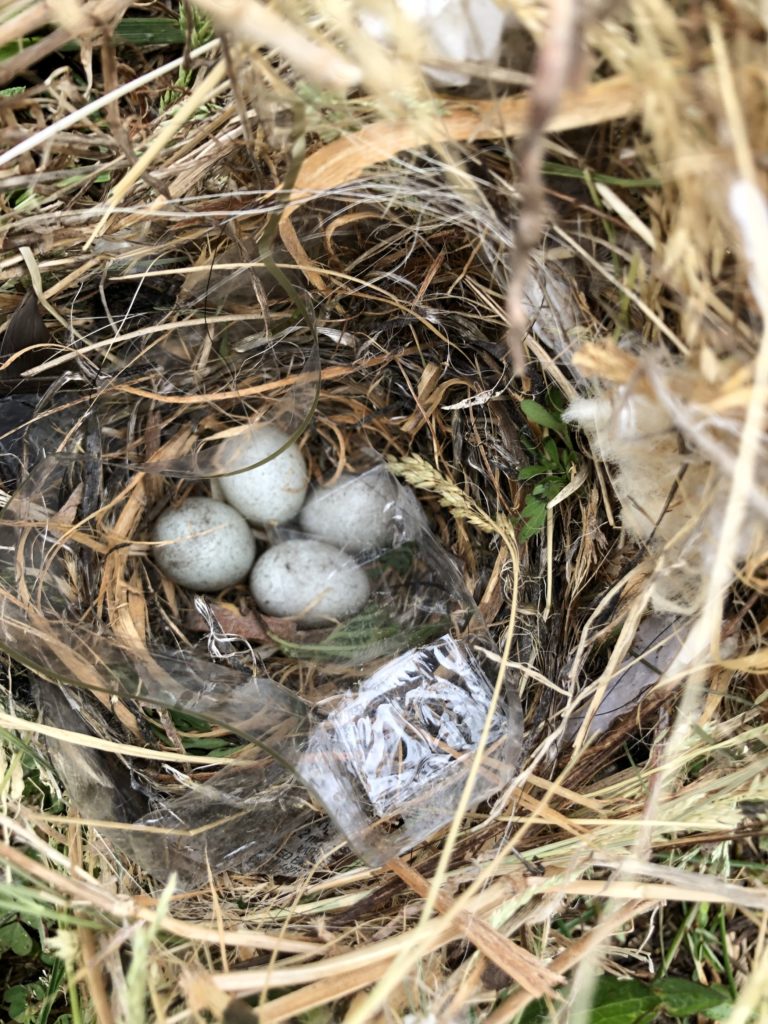


House Wren (Troglodytes aedon)
The house wren nest builds its nest by first piling twigs in the nest house. It then tops those off with softer material including grass, weeds, animal hair and feathers.
The house wren clutch can be anywhere from 3 to 10 eggs .7″ long and .5″ wide. They are white, pink-white, or grayish, speckled or blotched with reddish brown.
Tree Swallow (Tachycineta bicolor)
A tree swallow nest is often made entirely of grass, but may include other soft material like pine needles, animal hair, and artificial materials like cellophane or cigarette filters. The cup is about 2–3 inches across and 1–2 inches deep, and is usually lined with feathers of other bird species.

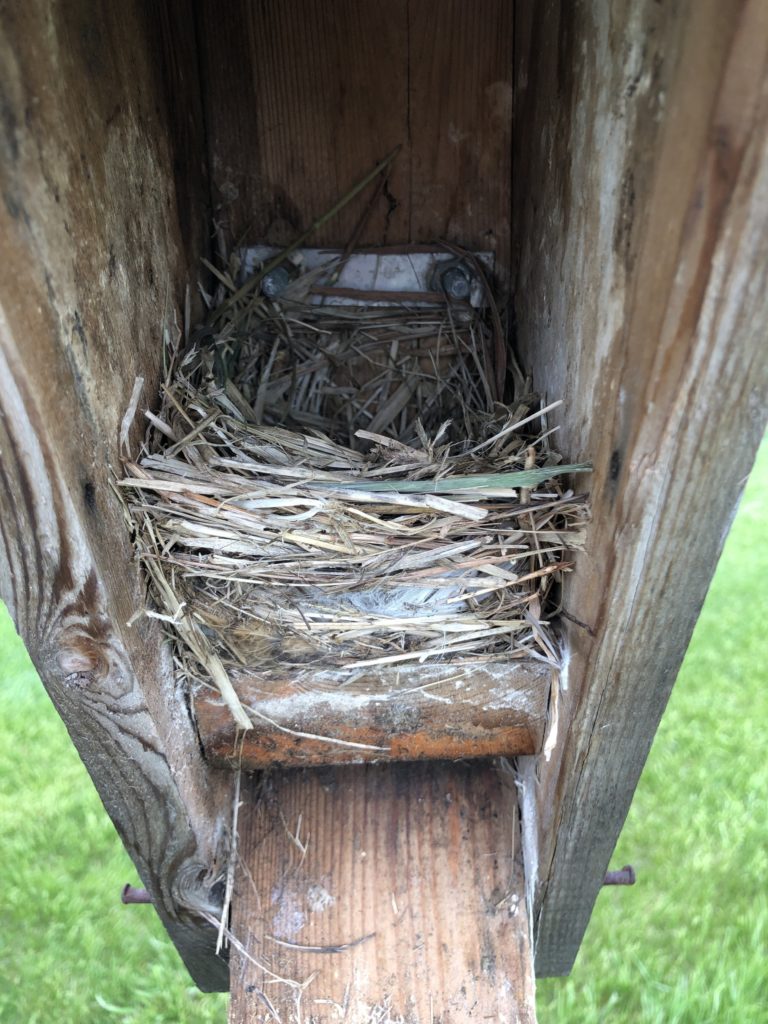
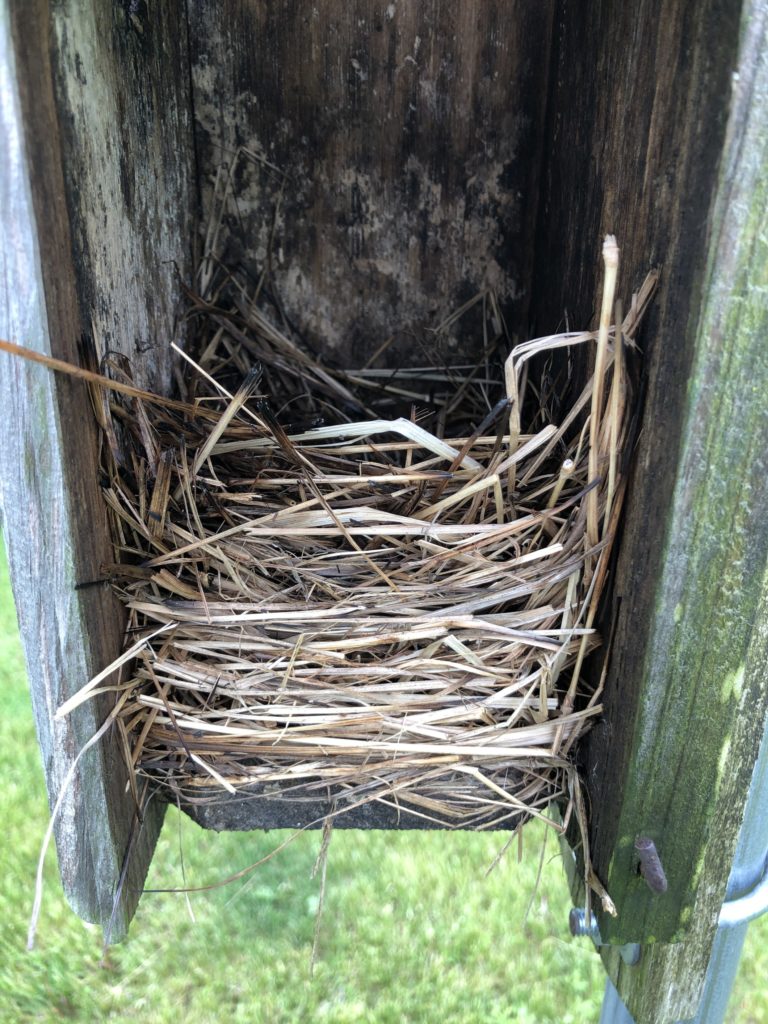

The tree swallow typically lays a clutch of two to eight. The eggs are pure white but translucent at laying. They measure about 0.75 by 0.55 in.
Tufted Titmouse (Baeolophus bicolor)
The tufted titmouse nest is typically constructed from damp leaves, moss, grasses and/or bark strips. It is line with soft materials such as hair plucked from live animals. (Photo when available.)
The tufted titmouse clutch is usually 5 to 7 eggs. The eggs are white or cream-colored with brown or purple spots and about .75″ long by .6″ wide.
Nest Box Types
There are many types of nest boxes. The North American Bluebird Society has over a dozen plans for bluebird nest boxes alone. Some in use by BluebirdStewards.online include:
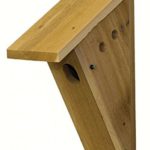
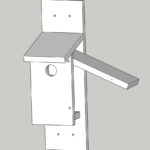
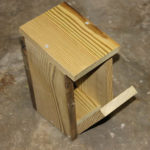
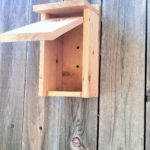
Nest Box Location
There is a plethora of on-line information on where to locate nesting boxes. NestWatch.org provides a page with quite a bit of information on locating nest boxes for a number of species. A few highlights and suggestions especially specific to bluebirds include:
- Mount the nest box on a pole. Predators like snakes can, believe it or not, easily climb walls. There are many baffles that can be placed on the pole, below the nest box, to deter predators from climbing poles.
- Try putting up a couple boxes about 15 to 20 feet apart. Most bird species will not nest close to the same species but will nest close to another species. For example, bluebirds prefer to nest no closer than 300′ from other bluebirds and tree swallows no closer than 35 feet. With two boxes 15 feet apart, if one is occupied by a tree swallow, the other, most likely, will not have a tree swallow and there is a better chance a bluebird may nest in it.
- Face the nest box opening to the east or north rather than south or west to protect the hatchlings from the hot sun.
- Place in an open space, if possible. Bluebirds prefer locations with short grass and something like a bush or some structure near by that the fledglings can jump up on.
Nest Box Construction
One of the most important decisions to be made in constructing a nesting box is the size of the entrance hole. Too small and the desired species can’t get in, too large and you risk attracting the wrong species. For Eastern bluebirds, 1 1/2″ is the generally preferred size. It is big enough for bluebirds but too small for the pesky Common Starling, an invasive species that competes for habitat with native North American birds. Unfortunately house sparrows, another invasive species, are still able to enter and make themselves at home. Some recommend 1 3/8″ in an effort to keep House Sparrows out. Irrespective of hole size, it is important to monitor nest boxes frequently to keep invasive species out.
In addition to hole size, floor space, ceiling height and height from floor to hole are also a consideration. The University of Maine Extension provides a very basic birdhouse design utilizing a single 1″x6″x6′ board along with a chart of suggested dimensions for various common birds. The Nebraska Extension of Lancaster County also publishes a chart of nest box dimensions. If you look closely, you can see there are some discrepancies. It turns out birds don’t fly around with tape measures and there are no hard, fast requirements, just pretty good suggestions. As BluebirdStewards.online gathers more data, we may be able to provide hard data on some of the benefits of various designs.
The following design was developed by Rex Collier, Extension Master Naturalist with K-State, Johnson County Extension. Rex incorporated observations made over years of monitoring bluebirds along with bluebird nesting research. One significant feature of this design is a door that opens down significantly reducing the chance of early fledging when opening the door for observation.


